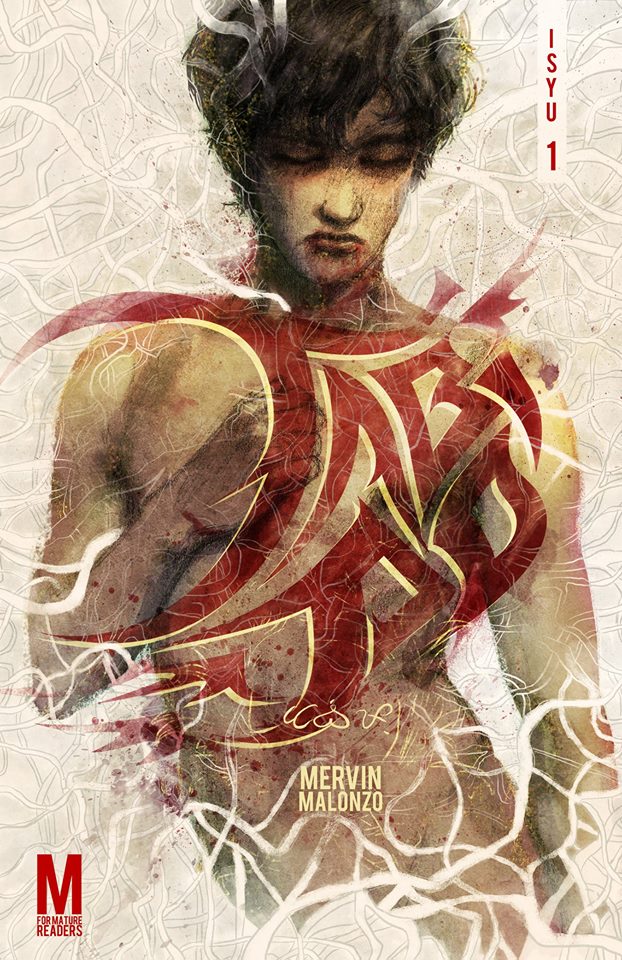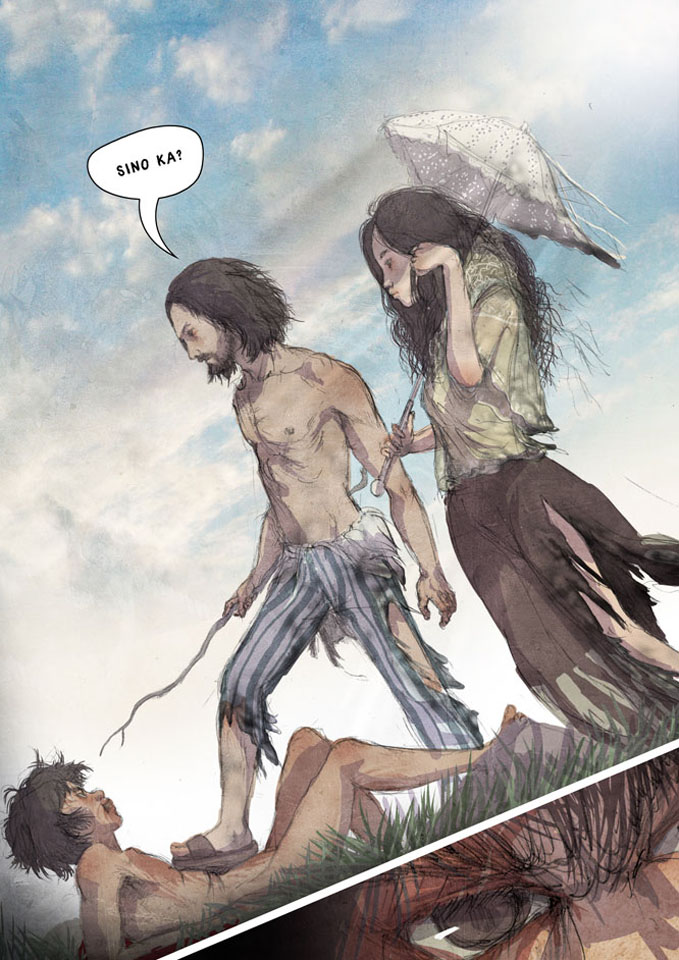Filtered By: Lifestyle
Lifestyle
Comics review: ‘Tabi po’ gives birth to a bloody, morbid masterpiece
By ANDREI MEDINA, GMA News

The print version cover of "Tabi Po." All photos courtesy of Mervin Malonzo
Usually, the aswang—a human by day and severed upper torso with black wings by night—is portrayed in a comedic fashion, if not your typical horror grunt, particularly in movies.
But "Tabi Po" author and artist Mervin Malonzo finally steps up in his debut publication and dispels the age-old curse by giving the classic aswang a much-needed facelift.
In fact, Malonzo strays from the beaten path and creates a story with a twist, making the infamous gut-eaters the focal point of his plot.
Sanguine story
"Tabi Po" tells the throwback tale of Elias, a newborn aswang, as he learns to live amongst people in the scenic towns of a nineteenth century Philippine province.
In the first few pages of the book Elias' insatiable hunger becomes unbearable as he viciously attacks hapless native animals in an attempt to appease his appetite.
He slays, dismembers and devours prey after prey, but soon discovers even the largest of livestock provide little nourishment for his famished form.
Enter Tasyo and Sabel, a pair of traveling aswangs who stumble upon the juvenile Elias still fresh and blood-soaked from a kill.
The two take a liking for their newfound kin and teach him the secret to quench his hunger: human flesh.
They then form a pack and embark on a journey with the goal of finding a place (to call home) where they can conveniently choose their next target while “co-existing” with people.
Animalistic art

Elias meets Tasyo and Sabel.
There's violence, nudity and a whole bunch of blood beautifully rendered against a tranquil setting—making for a startling contrast, and very pretty to look at.
I have to admit that the first thing that lured me into the world of “asong buwangs” (as the author fondly calls his creations) was the book's bewitching art.
The rugged yet clean presentation of characters and the landscape had a tantalizing charm, making me believe for a little while that I was actually experiencing the events in "Tabi Po" as I turned each page.
Moreover, Malonzo's art also serves as a grim reminder of the innate animalistic nature each one of us harbors deep within our consciousness, ready to pounce whenever we breach boiling point.
Morbid masterpiece
Violence aside, I can honestly say that I came for the art, stayed for the story, and totally fell in love with "Tabi Po."
From its surreal art, charming characters, glossy pages, and uncanny story that uniquely illustrates the “beautiful humanity” of aswangs, this book simply screams quality.
The author has an eerie affinity with the supernatural, which is paired with his exceptional talent in portraying their lives. He dwells on human-like problems, allowing the reader to empathize with his hell-bent protagonists.
Indeed, Malonzo has made a masterpiece, morbid enough to replace your deepest fears. At the same time, it is interestingly addictive—you wouldn't dare let go 'til you're done reading, even in the wee hours of the night.
"Tabi Po" is one of my most memorable reads from this year and here's hoping that its next issue will be published soon—before Elias finds out I know about him and his peculiar taste for flesh. — VC, GMA News
More Videos
Most Popular



